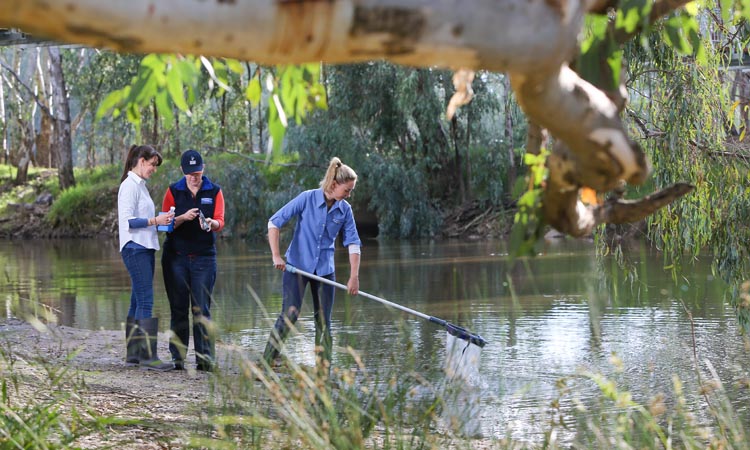
ROLE OF THE NORTH EAST CMA
Catchment Management Authorities have specific responsibilities for waterway management under the Victorian Water Act 1989. These include:
- developing a Regional Waterway Strategy and associated action plans
- developing and implementing targeted and sustainable work programs
- authorising works and activities on waterways, under By-law No 2014/01 Waterways Protection
- acting as a referral body for planning applications, licences to take and use water and construct dams, for water use and other waterway health issues
- identifying regional priorities for environmental water management and facilitating delivery of environmental water
- developing and coordinating regional floodplain management plans
- regulating the effects of drainage schemes on waterways
- responding (and assisting other agencies to respond) to natural disasters and incidents affecting waterways such as bushfires, floods and algal blooms
- provide opportunities for community participation, to facilitate practice change and awareness of catchment issues
VICTORIAN WATERWAY MANAGEMENT STRATEGY
The Victorian Waterway Management Strategy provides the overarching framework for government, in partnership with the community, to maintain and improve the condition of Victoria’s waterways so they can support environmental, social, cultural and economic values that are important to communities.
The Victorian Waterway Management Strategy provides the policy direction for managing Victoria's waterways over an 8 year period. The Strategy includes policies, principles and actions related to the management of riparian land and acts as a framework to maintain and improve the environmental condition of priority public and private riparian land.
NORTH EAST WATERWAY STRATEGY
The North East Waterway Strategy (NEWS) is the single planning document for river and wetland management in the North East CMA region and drives implementation of the management approach outlined in the Victorian Waterway Management Strategy.
The Strategy sets a vision for management of waterways across the North East region. It is designed to support people who need to make decisions about the management of rivers, floodplains and wetlands across the region.
The NEWS outlines the regional goals for waterway management. High value waterways are identified and from those a subset of priority waterways have been determined for an eight-year planning period. The Strategy includes a strategic regional work program of management activities for priority waterways. The regional work program provides direction to guide investment in waterway management by the Victorian Government.
The NEWS also identifies the regional priorities for environmental water management over the eight-year planning period, together with the complementary management activities required at those sites. This information will be used as a key input to environmental water planning arrangements.
The NEWS was developed by the North East CMA in partnership with other regional agencies, authorities and boards involved in natural resource management, plus Traditional Owners, north east communities and other key stakeholders.
REGIONAL RIPARIAN ACTION PLAN
The Regional Riparian Action Plan was a statewide 5 year plan (2015/16 – 2020-21) to accelerate on-ground riparian management works to improve the health of riparian land along Victoria's regional rivers, estuaries and wetlands. Riparian land adjoins rivers, creeks, estuaries, lakes and wetlands (often called ‘frontage’ or ‘river bank’). It can vary from a narrow strip to a wide corridor and is often the only remaining area of remnant vegetation in the landscape.
A 2009 survey of more than 7,000 Victorians revealed that 99% of respondents want healthy waterways in their areas. The majority (83%) felt ‘most connected’ to a local waterway, usually the stretch of river closest to where they live. Most people surveyed visit waterways for recreational purposes, to enjoy the scenery, native plants and animals or to walk, hike, cycle, picnic or fish. Improving the environmental condition of waterways, particularly riparian land in priority areas, is a critical task to sustain populations of native plants and animals, provide opportunities for recreation and protect cultural values. Improving the environmental condition of waterways also supports economic development through important industries such as tourism and agriculture.
Informed by regional Waterway Strategies, the Regional Riparian Action Plan outlines priority riparian management outcomes. On ground activities will be funded to accelerate improvement in the condition of riparian land for priority waterways. Works include fencing to manage stock, revegetation programs, weed management and construction of off-stream watering systems.